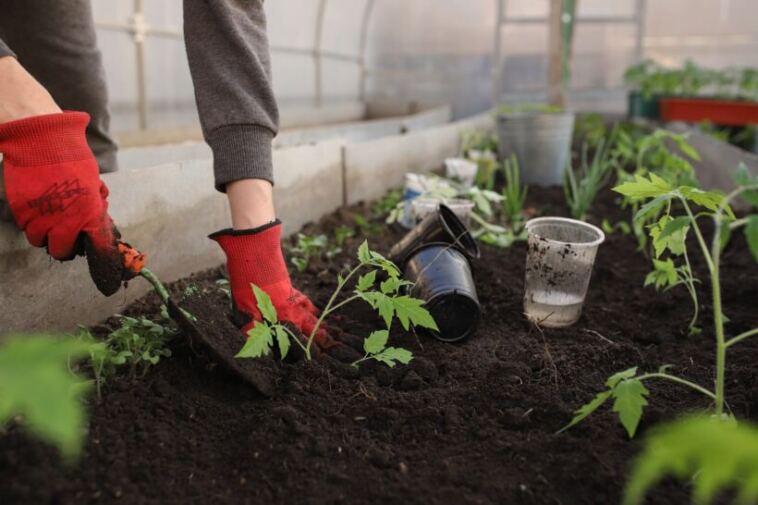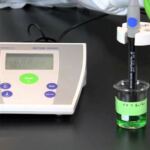- Like
- SHARE
- Digg
- Del
- Tumblr
- VKontakte
- Flattr
- Buffer
- Love This
- Save
- Odnoklassniki
- Meneame
- Blogger
- Amazon
- Yahoo Mail
- Gmail
- AOL
- Newsvine
- HackerNews
- Evernote
- MySpace
- Mail.ru
- Viadeo
- Line
- Comments
- Yummly
- SMS
- Viber
- Telegram
- JOIN
- Skype
- Facebook Messenger
- Kakao
- LiveJournal
- Yammer
- Edgar
- Fintel
- Mix
- Instapaper
- Copy Link
In the realm of cannabis cultivation, understanding pH isn’t just science; it’s the art of nurturing growth.”
Introduction
Cannabis cultivation is both an art and a science, with numerous factors playing a role in a plant’s growth and health. One such crucial factor is the pH level of the cannabis soil.
From the macro to the micro, every detail can impact the final yield and quality of the cannabis plant. The importance of cannabis soil pH and its role in achieving a flourishing harvest can’t be overlooked.
At the core of successful cannabis cultivation lies a fundamental understanding of the soil environment. Soil pH, often overlooked by novice growers, serves as a significant determinant of a plant’s overall health.
Whether you’re sourcing cannabis soil for sale or concocting your own cannabis soil recipe, it’s vital to grasp the nuances of pH.
Cannabis Soil PH: Quick Reference Guide – Key Takeaways
| Section | Key Takeaways |
|---|---|
| Importance | Soil pH is fundamental for optimal cannabis growth, affecting potency and quality. |
| Basics of Soil pH | pH measures the acidity or alkalinity of soil, with 7 being neutral. |
| Why pH Matters | A balanced pH ensures proper nutrient uptake and plant resilience against pests and diseases. |
| Ideal pH Range for Cannabis | For the best cannabis soil, the ideal pH lies between 6.0 and 7.0. |
| Symptoms of pH Imbalance | Imbalances can lead to yellowing leaves, stunted growth, and weak stems. |
| Adjusting and Stabilizing pH | Soil pH can be adjusted using specific products, with regular monitoring being crucial. |
| Tools for Testing pH | pH meters and test kits are valuable tools for accurately determining soil pH. |
| Factors Influencing Soil pH | Water quality, fertilizers, and natural soil components can affect pH. |
| Benefits of Proper pH | Balanced pH ensures efficient nutrient absorption, disease prevention, and optimal yields. |
| Myths about Cannabis Soil pH | Not all cannabis strains have identical pH requirements, and outdoor soil isn’t always self-regulating. |
| Key Points | Understanding and maintaining the right pH, regardless of the growing environment (indoor/outdoor, autopots, etc.), is pivotal for successful cannabis cultivation. |
Basics of Soil pH
pH stands for ‘potential of Hydrogen’. It’s a measure of the acidity or alkalinity of a solution, in our case, the soil. On a scale ranging from 0 to 14, a pH less than 7 is considered acidic, while above 7 is alkaline. A pH of 7 is deemed neutral, like distilled water.
Why pH Matters in Cannabis Cultivation
Just as humans require a specific diet to absorb essential nutrients efficiently, cannabis plants thrive best within a particular pH range. This range ensures the optimal uptake of necessary nutrients present in the best cannabis soil mix. Moreover, a balanced pH strengthens the plant’s natural defense mechanisms, ensuring resilience against potential pests and diseases.
Ideal pH Range for Cannabis
For cannabis soil, the sweet spot lies between 6.0 and 7.0 pH. This range ensures the plant can absorb all the vital cannabis soil nutrients effectively. For those venturing into hydroponics, the range slightly differs, hovering between 5.5 and 6.5.
Symptoms of pH Imbalance in Cannabis
Imbalances in pH can manifest in various ways:
- Yellowing or Spotted Leaves: Indicative of nutrient deficiencies caused by an inability to absorb certain cannabis soil nutrients due to pH imbalance.
- Stunted Growth: A plant struggling with either extremely acidic or alkaline conditions may not grow at its usual pace.
- Weak or Brittle Stems: This can be a sign that the plant isn’t absorbing the necessary nutrients to support its structural growth.
Adjusting and Stabilizing Cannabis Soil pH
The best cannabis soil offers a balance, but occasionally, adjustments are needed:
- To Raise pH (Increase Alkalinity): Gardeners can incorporate dolomite lime or wood ash.
- To Lower pH (Increase Acidity): Products like organic sulfur or pH-down solutions can be useful.
- Monitoring: Regularly testing the soil using pH meters or test strips ensures that it remains within the desired range.
Tools for Testing and Monitoring Soil pH
Ensuring the best nutrients for cannabis soil grow involves regular monitoring. pH meters, readily available online or at garden centers, provide accurate readings. Meanwhile, pH test kits offer a more visual approach, with color changes indicating the soil’s acidity or alkalinity.
There are various tools available that provide growers with accurate and timely pH readings:
- pH Meters:
- Description: These electronic devices have a probe that you insert directly into the soil or a soil-water solution. They give digital pH readings, often to the nearest tenth of a pH unit.
- Pros: Quick results, precise readings, and often come with features to measure other parameters such as moisture and light.
- Cons: They require regular calibration and can be more expensive than other testing methods. The probes can also be sensitive and may break if not handled with care.
- Usage Tips: Always clean the probe after each use. Regularly calibrate using a pH buffer solution for accuracy.
- pH Test Strips:
- Description: Also known as litmus paper, these are small strips of paper that change color based on the pH of a solution. You test the pH by mixing soil with distilled water and then dipping the strip into the solution.
- Pros: They are inexpensive, easy to use, and suitable for quick checks.
- Cons: Less accurate than digital meters, especially if the color change is subtle.
- Usage Tips: Always use distilled water to avoid any pH influence from tap water. Store strips in a cool, dry place.
- Soil pH Testing Kits:
- Description: These kits often come with a set of chemicals that react with a soil sample to change its color based on its pH. You then compare this color to a provided chart.
- Pros: Fairly inexpensive and can provide results for a range of pH values. They are more accurate than test strips.
- Cons: They can be messier than other methods and require a bit more time to get results.
- Usage Tips: Follow the manufacturer’s instructions precisely for the most accurate results.
- Laboratory Soil Tests:
- Description: This involves sending a soil sample to a professional lab that can provide a detailed analysis of the soil’s pH and other characteristics.
- Pros: Highly accurate and can also give information on nutrient levels, organic matter content, and more.
- Cons: More expensive than at-home tests and results can take longer to receive.
- Usage Tips: Ensure you collect soil samples correctly and send them to a reputable lab familiar with cannabis cultivation needs.
How to Test Cannabis Soil PH Levels: Video Guide
Factors Influencing Soil pH
Several elements can sway your soil’s pH:
- Water Quality: Tap water often contains added minerals which can influence soil pH.
- Fertilizers: Some fertilizers can alter pH over time. Opting for organic cannabis soil mixes can offer a more stable pH environment.
- Natural Soil Components: Elements like peat moss can naturally acidify soil.
Benefits of Maintaining Proper Cannabis Soil pH
The payoffs of regular pH monitoring are manifold:
- Optimal Nutrient Absorption:
- A balanced pH ensures that cannabis plants can effectively absorb essential nutrients available in the soil, leading to healthier growth.
- Disease and Pest Prevention:
- Healthy plants with balanced pH levels tend to be more resilient and can better resist diseases and pests, reducing the need for chemical interventions.
- Enhanced Plant Growth:
- Proper pH levels contribute to vigorous growth, ensuring plants reach their full genetic potential in terms of size and yield.
- Increased Potency:
- Cannabis plants grown in optimal pH conditions often produce buds with higher cannabinoid content, leading to increased potency.
- Improved Terpene Profile:
- Terpenes, responsible for the aroma and flavor of cannabis, can flourish under the right pH conditions, enhancing the sensory experience.
- Less Risk of Nutrient Lockout:
- pH imbalances can cause certain nutrients to become unavailable to the plant, a situation known as nutrient lockout. Balanced pH helps prevent this issue.
- Reduced Metal Toxicity:
- Certain metals become more soluble and potentially toxic to plants in extremely acidic or alkaline conditions. Maintaining appropriate pH reduces this risk.
- Better Water Utilization:
- Plants in a balanced pH environment can utilize water more efficiently, leading to better hydration and less water waste.
- Optimized Soil Microbe Activity:
- Beneficial microbes in the soil, which aid in nutrient breakdown and availability, thrive best in specific pH ranges.
- Consistency in Harvests:
- Regular pH monitoring and adjustment lead to consistent growing conditions, which can result in more predictable harvest yields and qualities.
- Longer Soil Lifespan:
- Soils maintained at the right pH level can be reused for more growing cycles without significant degradation in quality.
- Cost Efficiency:
- By preventing nutrient lockouts, diseases, and other pH-related issues, growers can reduce the financial costs associated with lost plants or additional interventions.
- Enhanced Environmental Responsibility:
- A balanced pH reduces the need for chemical adjustments, leading to more sustainable and environmentally-friendly cultivation practices.
Common Myths and Misunderstandings about Cannabis Soil pH
One prevalent myth is that all cannabis strains require the same pH. In reality, while most strains thrive in the 6.0-7.0 range, specific strains, especially landraces, might have unique pH preferences.
Another misconception is that outdoor cannabis soil is self-regulating. While outdoor soils do have buffering capacities, regular monitoring is still crucial, especially if fertilizers are used.
Here’s a longer list of common myths related to cannabis soil pH:
- All Strains, Same pH:
- Belief that all cannabis strains thrive at the same pH level, ignoring the unique requirements of some varieties.
- Self-Regulating Soil:
- The misconception that outdoor soils will naturally adjust or maintain their pH without any intervention.
- “Natural” Means Balanced:
- Assuming that organic or natural soils will always have the right pH for cannabis cultivation.
- Water Doesn’t Affect pH:
- Overlooking the impact of water quality, believing that it doesn’t influence soil pH.
- Adjust Once, and Done:
- The idea that once you adjust soil pH, it remains stable without the need for further checks or adjustments.
- Visible Symptoms Only:
- Belief that pH imbalances will always manifest as visible symptoms in the plant, disregarding subtle changes or root health.
- Any pH Adjuster Works:
- Assuming that all pH adjusting products are equal, without considering their long-term effects or suitability for cannabis.
- Testing Isn’t Necessary:
- The misconception that experienced growers can “feel” the pH without using testing tools.
- Overly Acidic is Always Bad:
- The belief that cannabis can never thrive in slightly acidic conditions, ignoring that it can be optimal for nutrient uptake in certain setups.
- One-time Correction:
- Thinking that a single pH correction will resolve all growth problems, without considering other potential contributing factors.
Expert Opinion: Interview with Soil pH Expert on Cannabis Cultivation
Today’s opinion comes from an expert with a doctorate degree in horticulture, and over a decade of real world experience growing everything you can imagine from tomatoes to cannabis.
Here’s what she had to say about soil pH… 👇
Max’s Harvest: Thank you for joining us today. Can you start by introducing yourself and your expertise in the realm of cannabis cultivation?
Expert: Of course! My name is Dr. Jane Thompson, and I specialize in soil science with a particular focus on cannabis cultivation. I’ve been researching the importance of soil pH for over a decade, and I’ve seen firsthand how it can impact the health and yield of the cannabis plant.
Max’s Harvest: That’s impressive. Our article emphasizes that understanding pH isn’t just science; it’s an art. Can you elaborate on that?
Dr. Jane Thompson: Absolutely. While the science of pH is about measuring the acidity or alkalinity of the soil, the art comes into play when you’re trying to maintain that delicate balance. Every strain of cannabis might have its slight preferences, and factors like water quality, soil type, and even the local climate can influence soil pH. So, it’s a dance of constantly monitoring and adjusting to ensure optimal conditions.
Max’s Harvest: Our article also mentions an ideal pH range for cannabis soil between 6.0 and 7.0. Why is this range so crucial?
Dr. Jane Thompson: This pH range is vital because it ensures the optimal uptake of essential nutrients by the cannabis plant. When the soil pH is within this range, nutrients like nitrogen, phosphorus, and potassium are more available to the plant. An imbalance, either too acidic or too alkaline, can lock out these nutrients, leading to deficiencies and affecting the plant’s health.
Max’s Harvest: What are some common symptoms of pH imbalance in cannabis plants?
Dr. Jane Thompson: Some of the telltale signs include yellowing leaves, stunted growth, and weak stems. These symptoms often indicate nutrient deficiencies, which, as I mentioned earlier, can arise from pH imbalances. It’s essential to address these issues promptly to prevent long-term damage to the plant.
Max’s Harvest: We also debunked some myths related to cannabis soil pH. Can you share one such myth and the truth behind it?
Dr. Jane Thompson: A common myth is that you can determine soil pH just by looking at the plant’s health. While symptoms can indicate pH issues, they can also arise from other factors. The only accurate way to determine soil pH is through testing, using pH meters or test strips.
Max’s Harvest: Lastly, for our home growers, what’s one piece of advice you’d give when it comes to maintaining the right soil pH?
Dr. Jane Thompson: Regularly monitor your soil’s pH, especially after adding nutrients or amendments. And remember, it’s easier to prevent pH imbalances than to correct them. So, invest in good quality soil, use clean water, and don’t overcomplicate things. Nature has a way of finding balance; sometimes, we just need to assist it a little.
Max’s Harvest: Dr. Thompson, thank you for shedding light on the importance of soil pH in cannabis cultivation. Your insights have been invaluable!
Dr. Jane Thompson: It’s been a pleasure. I’m always happy to share knowledge and help growers achieve the best possible results.
FAQ: Cannabis Soil pH
By understanding and monitoring soil pH, cannabis growers can optimize the health and yield of their plants, ensuring a fruitful harvest.
1. What is soil pH, and why is it essential for cannabis cultivation?
- Soil pH measures the acidity or alkalinity of soil. For cannabis, the correct pH level ensures optimal nutrient uptake and overall plant health, affecting growth, potency, and yield.
2. What is the ideal pH range for cannabis grown in soil?
- The optimal pH range for cannabis cultivated in soil lies between 6.0 and 7.0. This range ensures the plant can absorb essential nutrients effectively.
3. How does an incorrect pH level affect cannabis plants?
- An imbalanced pH can lead to nutrient lockout, where cannabis plants cannot effectively absorb nutrients, leading to deficiencies. Symptoms might include yellowing leaves, stunted growth, or weak stems.
4. How can I test the pH of my cannabis soil?
- You can use pH meters, test strips, or soil pH testing kits available at garden centers or online. For a more in-depth analysis, some growers opt for laboratory soil tests.
5. How do I adjust the pH level if it’s too high or too low?
- To raise (alkalize) soil pH, gardeners can add dolomite lime or wood ash. To lower (acidify) the pH, organic sulfur, pH-down solutions, or certain organic composts can be effective.
6. Are there specific symptoms to look out for in cannabis plants indicating pH problems?
- Yes, signs like yellow or spotted leaves, stunted growth, or weak and brittle stems can indicate pH imbalances and resulting nutrient deficiencies.
7. Can water quality affect my cannabis soil pH?
- Absolutely. Tap water often contains added minerals that can influence soil pH. It’s a good practice to test water pH and, if necessary, adjust it before watering plants.
8. Is the pH requirement different for cannabis grown hydroponically?
- Yes, for hydroponically grown cannabis, the ideal pH range is slightly more acidic, typically between 5.5 and 6.5.
9. What role do fertilizers and amendments play in soil pH?
- Some fertilizers and soil amendments can alter soil pH over time. For instance, continuous use of certain nitrogen-rich fertilizers might acidify the soil. It’s essential to monitor pH regularly, especially after adding new nutrients or amendments.
10. Can I prevent pH fluctuations in my cannabis soil?
- While minor fluctuations are natural, maintaining a consistent environment helps stabilize pH. Using quality organic cannabis soil, monitoring water quality, and periodic pH testing can significantly reduce drastic pH shifts.
Conclusion
Whether you’re growing in indoor cannabis soil or venturing outdoors, understanding and maintaining the right pH is pivotal. From the initial cannabis soil recipe to the choice of cannabis soil mix, every decision can influence pH and, by extension, your plant’s health. As the cannabis industry continues to blossom, arming oneself with knowledge remains a grower’s most potent tool.
For those eager to delve deeper into the science of cannabis soil pH and cultivation, numerous journals, online forums, and books shed light on this intricate dance of chemistry and botany. Whether you’re an amateur grower or a seasoned cultivator, understanding soil pH is the bedrock of a successful harvest.


